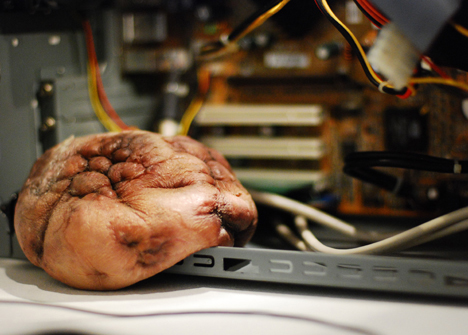
If you’re a home user who skipped the Windows Vista release and are moving from XP to Windows 7, one thing you might want to do is create new user accounts for other members of the household. Since the interface is laid out quite differently than XP, we will take a look at user accounts in the new OS.
Several aspects of the user interface have changed from XP to Vista and Windows 7. If your computer is shared by the rest of your family, it is nice to be able to give each person their own account. However, you probably don’t want to give the same functionality to each of them. Let’s take a look at how to add a new user account, an overview of each account type, and assigning the type to each user.
Add New User
To add a new user open Control Panel and under User Accounts and Family Safety click on Add or remove user accounts.

Now click on Create a new account.

Just type in the name of the user and select the type of account. Your best bet is to make them a Standard User so they cannot make changes to system settings, delete other users important files, or change security settings.

Now when you reboot the PC you will see the new users you created at the log in screen.

Of course a user who’s account is password protected will need to log in to start their session.

Standard users won’t be able to make any important system changes without the admin password.

As Administrator you can make additional changes to the account like changing or creating user passwords.

Types of User Accounts
There are three types of user accounts and each provides the user with different levels of control over the computer.
* Administrator – The Admin account have complete control over the computer and its settings.
* Standard – Standard users can use most of the capabilities on the machine. They cannot install software, delete system files, or change settings. If you’re working in a Standard account and need to make system changes, the administrator password will be needed.
* Guest – Let’s a user have temporary access to the computer. They cannot install software, make any changes, or create a password. This is a good choice for someone to use to check their email quick or type out a document.
Here is an example of what a user with a Standard account would see if they tried to monkey around with something they shouldn’t be.

The Guest user account it off by default but you just need to go in and turn it on.

The only changes available to the Guest account are changing the picture and turning it on or off.

User Account Tips
If you’re the administrator and installing software, remember to select if you want it available for all users or only yourself.

Keep in mind that if you shut down the machine while another person is logged in, they might lose all any data they have not yet saved. Even though you get a confirmation screen, it might be worth mentioning to other users so they are aware of it, especially in a busy household.

These basic tips should help create and configure user accounts so each member of the household has their own account when working on the computer.























